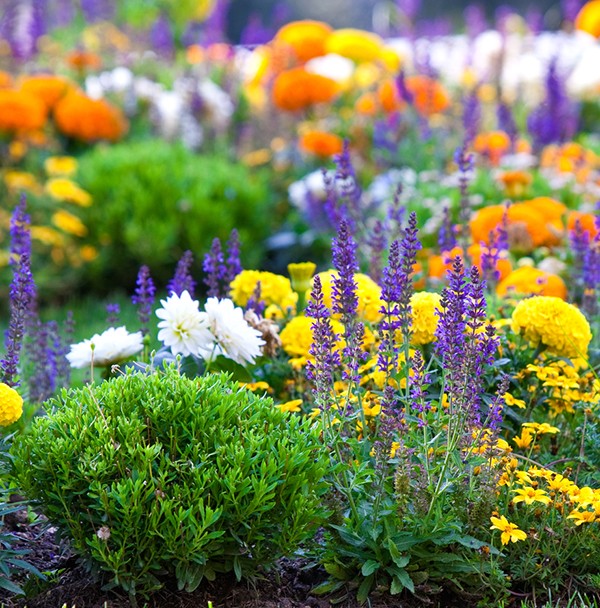Plants & Pets
TreeTake Network
There are no "bad" plants that don’t help with oxygen, as all plants that perform oxygenic photosynthesis (most plants) produce oxygen as a byproduct, while others, like green sulphur bacteria, perform anoxygenic photosynthesis without producing oxygen. However, some plants are known for producing very little oxygen, such as pine trees with their thin needles. Additionally, some plants, like the poisonous oleander, are considered "bad" or dangerous due to their toxicity, despite still producing some oxygen.
Why do most plants produce oxygen?
Photosynthesis is the process by which plants use sunlight, water, and carbon dioxide to create their own food, releasing oxygen as a byproduct. The type of photosynthesis that plants perform is called oxygenic photosynthesis, which requires water as a hydrogen donor and produces oxygen. Plants are known for releasing some volatile organic compounds (VOCs), but they also remove certain VOCs from the air. While some plants are toxic to humans or pets or can cause allergies, a low VOC rating is not a negative trait.
Plants that produce minimal oxygen: Pine trees: These trees are cited as producing the least amount of oxygen among trees because of their thin needles.
Since the term "bad" can have multiple meanings, here is a list of plants that could be considered that in some contexts, such as being poisonous, producing strong or foul odors, or potentially causing allergic reactions.
Strong-smelling or stinky plants
Some plants release VOCs that create unpleasant odors. While some people may enjoy these strong scents, others find them overpowering or foul.
Corpse Flower (Amorphophallus titanum): Releases a powerful odor of rotting meat to attract pollinators.
Eastern Skunk Cabbage (Symplocarpus foetidus): Emits a foul odor to attract pollinators.
Bradford Pear Tree (Pyrus calleryana): The flowers produce a rotting fish-like smell.
Crown Imperial (Fritillaria imperialis): These flowers are known for their skunk-like odor.
Valerian: The roots of this plant can smell like dirty socks.
Ginkgo Tree (Ginkgo biloba): Female trees produce fruit with a foul, feces-like smell when crushed.
Plants that are "bad" for other reasons:
A wide variety of common and ornamental plants can be harmful to human health, causing effects that range from mild skin irritation to severe poisoning or death. Toxins can be found in different parts of a plant, and the degree of toxicity can vary with the plant's age, the season, and preparation methods.
Highly poisonous plants (ingestion can be fatal)
Oleander (Nerium oleander): A common ornamental shrub, all parts of the oleander are toxic and can be fatal if ingested, affecting the heart and central nervous system.
Water hemlock (Cicuta maculata): Considered by some to be the most violently toxic plant, its deadly cicutoxin can cause painful convulsions, nausea, and death. It can be mistaken for edible parsnips or celery.
Deadly nightshade (Atropa belladonna): This plant has sweet-tasting, shiny black berries that are especially dangerous to children. It contains toxic alkaloids that can paralyze involuntary muscles, including the heart.
Castor bean (Ricinus communis): The unprocessed seeds contain ricin, an extremely potent poison. Ingestion can cause severe vomiting, diarrhea, and seizures. As few as one or two seeds can kill a child.
Rosary pea (Abrus precatorius): The seeds of this tropical plant contain abrin, which can cause organ failure. The seeds are only poisonous if scratched, broken, or chewed.
Foxglove (Digitalis purpurea): All parts of this plant contain cardiac glycosides that can cause an irregular heartbeat, nausea, and fatigue. The drug digitalis is derived from it and used to treat heart disease in small, precise doses.
Plants that cause skin irritation (contact dermatitis)
Some plants and flowers release pollen, spores, or fragrances that can cause allergic reactions.
Poison ivy, oak, and sumac (Toxicodendron species): These plants produce an oily sap called urushiol, which causes an itchy, blistering rash upon contact. The oil can remain on clothing, tools, and pets.
Giant hogweed (Heracleum mantegazzianum): The sap contains furocoumarins that can cause severe, blistering rashes and permanent scarring when the affected skin is exposed to sunlight (a reaction called phytophotodermatitis). If the sap gets in the eyes, it can cause blindness.
Stinging nettle (Urtica dioica): The leaves and stems are covered in tiny hairs that inject formic acid and other irritants into the skin, causing a burning, tingling, and itchy rash.
Garden plants (many species): The leaves and sap of common plants like chrysanthemums, tulips, daffodils, hyacinths, and philodendrons can cause skin irritation in sensitive individuals.
Pencil cactus (Euphorbia tirucalli): The milky sap is toxic and can cause severe skin irritation and temporary blindness if it gets in the eyes.
Ferns: While good for air filtration, ferns can release spores that may trigger allergies.
Weeping Fig (Ficus benjamina): In addition to being toxic, it can also cause allergic reactions in some individuals.
Chrysanthemum (Chrysanthemum morifolium): The pollen from the flowers can trigger allergies.
Orchids: The pollen and fragrance from some species can cause allergic reactions.
Yuccas: These plants are known to produce pollen that can worsen allergies.
Common toxic houseplants
Dieffenbachia (Dumb Cane): This popular houseplant contains calcium oxalate crystals that cause intense burning and swelling of the mouth and tongue if ingested, leading to temporary loss of speech (hence the nickname).
Pothos (Devil's Ivy): Like dieffenbachia, its leaves contain calcium oxalate crystals that can cause oral irritation, swelling, and difficulty swallowing if chewed or ingested.
Philodendron: Many species contain calcium oxalate crystals that cause mouth swelling, pain, and skin rashes.
Peace Lily (Spathiphyllum): All parts of this plant contain calcium oxalate crystals that can cause intense irritation, sickness, and difficulty swallowing if ingested.
Sago palm (Cycas revoluta): This plant is highly toxic to both humans and animals, particularly the seeds, and can cause vomiting, diarrhoea, and severe liver failure.
Lilies (Lilium species): All parts of true lilies are highly toxic, especially to cats, and can cause fatal kidney failure even with small exposures.
What to do if exposed
If you or someone you know has ingested a poisonous plant, contact your local poison control center or seek immediate medical assistance. For skin contact, wash the exposed area with soap and cool water as soon as possible. Do not induce vomiting without specific instructions from a medical professional.
Common invasive garden plants
Invasive plants can be detrimental to the environment by outcompeting native plants for resources. Different plants can be invasive depending on the region. The following are species that are widely known for their invasive tendencies:
English ivy (Hedera helix): A vigorous, fast-growing vine and groundcover that can smother other plants, including trees.
Chinese wisteria (Wisteria sinensis): A woody vine that climbs and chokes native trees and shrubs.
Japanese knotweed (Reynoutria japonica): An aggressive and challenging-to-eradicate perennial that can send out rhizomes that damage building foundations and pavement.
Burning bush (Euonymus alatus): A popular shrub that produces seeds readily dispersed by birds, allowing it to invade forests and displace native plants.
Butterfly bush (Buddleja davidii): A shrub that produces thousands of wind-dispersed seeds, allowing it to colonize disturbed areas and outcompete native plant species that are vital to pollinators.
Purple loosestrife (Lythrum salicaria): A flowering perennial that can take over ponds, beaches, and irrigation canals. A single mature plant can produce millions of seeds.
Periwinkle (Vinca minor): An aggressive groundcover that can form dense mats, preventing the growth of native species.
Golden Bamboo (Phyllostachys aurea): A running bamboo that spreads through underground rhizomes, traveling several meters from the parent plant and aggressively taking over garden beds.
Norway maple (Acer platanoides): A tree that can form dense colonies that shade out and kill native understory plants.
Lily of the valley (Convallaria majalis): A perennial groundcover that spreads quickly via underground rhizomes, outcompeting other plants.
Giant hogweed (Heracleum mantegazzianum): A very tall plant that crowds out native species and poses a danger to human health, as its sap can cause severe burns.
Low VOC plants for health benefits
For air purification purposes, research has shown that a very large number of plants are needed to significantly impact VOC levels in an average indoor space. However, if you are seeking plants for aesthetic benefits while minimizing VOC output, these are considered low emitters: Ash, Jasmine, Lilac, Olive, Rhododendron, Maple, Walnut, Coast Redwood and Cypress.
















Leave a comment